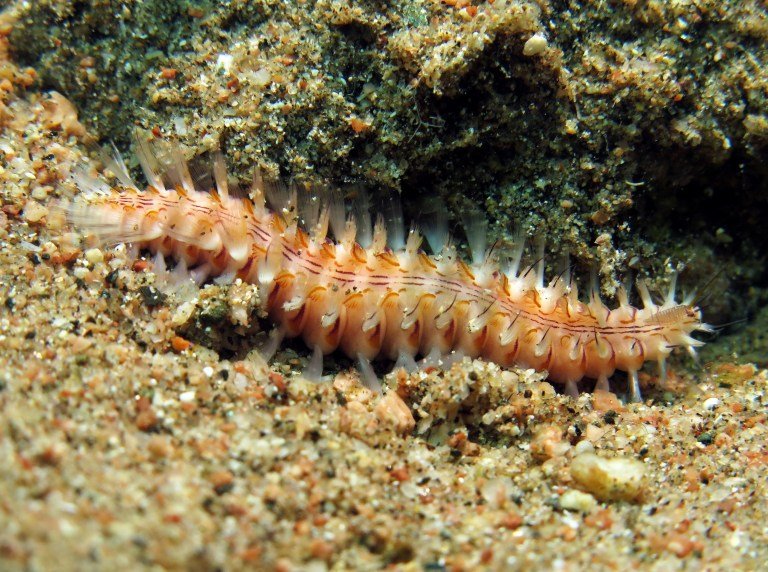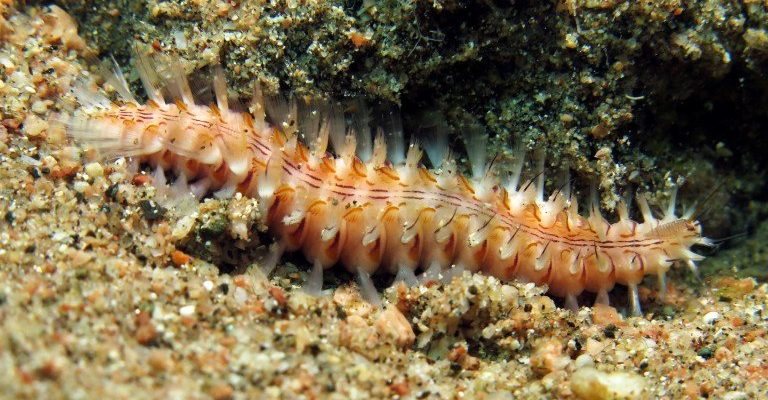
So, how can you tell the difference? Spotting pest species of bristle worms requires a keen eye and some basic knowledge of what these creatures look like. In this guide, I’ll walk you through the telltale signs to look for, how to differentiate between the good and the bad, and what to do if you find yourself with a bristle worm problem that needs tackling.
What Are Bristle Worms?
Bristle worms, which belong to the class Polychaeta, are segmented worms that can be found in both marine and freshwater environments. They play a valuable role in the ecosystem by breaking down organic matter and aerating the substrate. Imagine them as nature’s little recyclers, helping keep your tank clean and healthy.
However, not all bristle worms are beneficial. Some species are pests that can harm your coral and fish, often thriving on waste and detritus. Recognizing these unwanted species can save you a lot of headaches down the line. The key is knowing what you’re dealing with, so let’s dive deeper into spotting the pest types.
Identifying Pest Species
When it comes to pest species of bristle worms, appearance is everything. Generally, these worms can range from a few inches to several feet long, depending on the species. Here are a few visual cues to look out for:
- Color: Many harmful bristle worms are brightly colored, often in shades of red or green. If you notice a worm that looks too flashy for its surroundings, it might be a pest.
- Body Segments: Look closely at the body segments. Pest species often have more pronounced bristles that can be seen with the naked eye, while beneficial types tend to have a smoother appearance.
- Movement: If the worm is writhing or squirming erratically, it’s often a sign of distress. This could indicate a bristle worm that’s reacting to harm or is already in a scavenging frenzy.
It’s always helpful to have a reference guide or a smartphone app handy for identification. You might be wondering if it’s worth the effort; the answer is yes! Getting rid of the wrong type of bristle worm can save your tank’s ecosystem and your peace of mind.
Common Pest Species to Watch For
Now that you have an idea of how to spot potential pests, let’s look at some specific bristle worm species that are known troublemakers:
- Fireworm (Hermodice carunculata): Probably the most infamous pest, fireworms are known for their bright coloration and painful bristles. If you handle one, you’ll get a nasty sting, similar to a jellyfish burn.
- Palola (Palola viridis): Often mistaken for beneficial worms, these can also become pests when they multiply excessively. Their rapid reproduction can lead to overpopulation.
- Giant Bristle Worm (Eunice aphroditois): As the name suggests, this species can grow quite large, and it’s predatory. They’ll eat smaller fish if given the chance, making them a significant threat in a community tank.
Understanding the differences among these species is crucial for effective management. Remember, identification doesn’t just help you know which ones to keep; it can also guide your approach to tank maintenance and pest control.
Why Pest Bristle Worms Are a Problem
You might be thinking, “So what if I have a few bristle worms? What’s the big deal?” Well, here’s the thing: when these pests start multiplying or invading your coral and fish space, they can create an imbalance in your tank.
1. **Coral Damage:** Many pest bristle worms feed on corals or can irritate them with their bristles, leading to health issues for your beloved coral beauties.
2. **Predation on Fish:** If you have smaller fish, some bristle worms can become aggressive hunters. A particularly large or hungry bristle worm can easily take a bite out of an unsuspecting fish.
3. **Water Quality Impact:** As bristle worms die off or explode in number, they can contribute to decreased water quality in your aquarium, leading to unwanted algae blooms and increased ammonia levels.
Keeping an eye out for these potential concerns and addressing them early can save you a lot of stress and money in the long run.
How to Control and Manage Bristle Worm Populations
If you’ve confirmed you have pest species of bristle worms, don’t panic! There are several methods you can employ to get things under control:
- Manual Removal: If you feel brave, you can remove them by hand or with tweezers. Just be careful to wear gloves, especially if you’re dealing with fireworms!
- Trap Setup: You can make a simple trap using a bottle filled with bait. Some fish food or shrimp can draw the worms in, allowing you to catch them easily.
- Natural Predators: Consider adding fish species that enjoy munching on bristle worms, like certain wrasses. Just make sure they’re compatible with your current tank mates.
Each approach has its pros and cons, but what’s important is that you take action. Ignoring the problem can lead to an explosion of unwanted bristle worm populations, creating greater challenges later.
Maintaining a Healthy Aquarium Ecosystem
Preventing pest species from becoming a problem in the first place is always easier than tackling a full-blown invasion. Here are some tips to help maintain a healthy balance in your aquarium:
1. **Regular Maintenance:** Keep up with water changes and tank cleaning. Routine checks will help you spot any unusual inhabitants before they get out of hand.
2. **Monitor Feeding:** Be cautious with how much you feed your fish. Overfeeding can lead to excess waste, which in turn can attract and nourish unwanted pests.
3. **Live Rock and Sand:** Source your live rock and sand from reputable suppliers. Make sure they’re pest-free before introducing them to your tank.
Investing a little time in these practices can save you a lot of trouble down the line. Plus, they help create a thriving environment for your aquatic friends.
Spotting pest species of bristle worms takes a bit of practice, but with the right knowledge and tools, you’ll be well-equipped to keep your aquarium healthy. Remember, it’s about observing closely, knowing what to look for, and acting proactively to maintain balance.
By regularly monitoring your tank and adopting good practices, you can enjoy a vibrant, thriving aquarium free of unwanted pests. Just like any good host, keeping your aquatic environment clean and welcoming is key to everyone’s enjoyment—both your fish and yourself!

